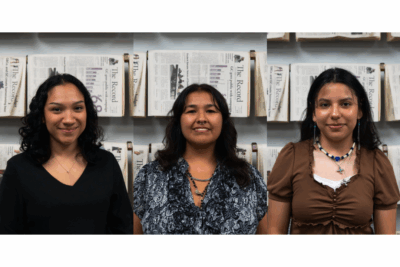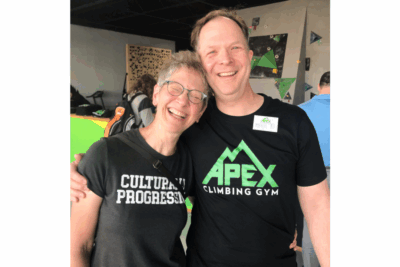In the mid 2010s, college campuses across the country were reckoning with how to respond to sexual violence and improve Title IX systems. National movements like “Know Your IX” and the “It’s On Us” campaign were pushing institutions to create clearer reporting procedures, survivor support and education around consent. At Goshen College, those same conversations were taking root. A group of passionate students, supported by faculty and administrators, recognized a gap in prevention and response efforts on campus. Out of that moment, the Prevention Intervention Network, or PIN, was born.
“At that time, there was a really active group of students on campus who were responding to the need to develop resourcing and reporting mechanisms around Title IX,” said Kendra Yoder, co-director of global engagement and PIN advisor. “I had just worked as the coordinator of a relationship and sexual violence prevention program,” she added, “so when I walked into Goshen, there were these really active students, there were administrators ready to support them, and I thought ‘Oh, this is part of what I do.’”At GC, that national call for reform found passionate advocates in students Laura Miller ’17, Sarah Hofkamp ’17 and Zach Zimmerman ’17. As Maple Scholars in 2016, the three partnered with professors Kendra Yoder and Beth Martin Birky to strengthen and expand the newly formed PIN. Supported by grants and collaboration across academic departments, the team worked to make Title IX policies more accessible, designed online reporting systems and extended training beyond campus. “We are coming together as a community,” Miller said at the time, “and deciding how we want to interact with each other, how we’re going to have each other’s backs and keep each other safe.”
As the program grew, PIN’s work began reaching far beyond GC. Under the guidance of Yoder, students led workshops in local high schools, churches and even worked with Hesston College to help develop a similar prevention network.
“I think the combination of really strong student commitment with structure and institutional support has been kind of the winning combination or the golden ticket for the success and sustainability of our program,” said Yoder.
Despite its success, PIN’s work has not been without challenges. “Certainly there were people who thought this doesn’t happen here,” Yoder said. “I think there were still a lot of rape myths around sexual assault is only about stranger violence. That the fear was outside the campus and not actually the dynamics within campus,” she added. “So there were all of those concerns, but I mostly experienced an openness and even a welcome solution-focused orientation to ‘What can we do?’”
From its earliest days, PIN sought to bring sexual violence prevention education directly into the classroom. Each year, student members lead bystander training in GC’s Identity, Culture and Community (ICC) classes, reaching every incoming first-year. Yoder recalls the very first session in 2015, when a nervous student accidentally wrote on the whiteboard with a permanent marker in front of three combined ICC classes. “It was hilarious and kind of broke the ice,” she said.
That energy has grown into a structured, inclusive curriculum.Recent updates, led by a previous co-advisor Emily Hahn, in collaboration with Yoder, ensure the material reflects the diversity of GC’s student body, including commuter and LGBTQ+ students. By embedding bystander training into ICC, PIN has created a shared foundation of knowledge and language across the campus, equipping the entire student body to recognize and intervene in harmful situations.
Over the past decade, PIN has become more than a student-led initiative, it is “baked into the fabric” of GC, said Dr. Steven D. Parker on his recent visit to GC.
PIN has impacted multiple students and faculty through the years, “I felt empowered with the information I received. I felt that I was better prepared to respond to situations I might find myself in, and that I might be able to help prevent harm being done to others,” said Christina Elizalde, a sophomore elementary education major. “It tells other men that they don’t have to choose between being soft and strong,” said Demetrio Garcia, a junior sociology major.
Looking ahead, PIN shows no signs of slowing down: 25 students have signed up for next semester.
“I’m just thinking about the best ways to double our size, keep engagement high and bring many of these first-years into the world of PIN in ways that work well for them and work well for us,” said Anna Groff, professor of communications and advisor for PIN.
Yoder added her thoughts for the years to come.
“I would love to see us doing more community outreach again where appropriate, but I also feel like our students are the ones who come up with the best ideas, and it’s often building on their own networks and their own connections that we’ve had the most impact,” Yoder said. “I’m excited to see what happens, but I’m game for anything — conferences, youth groups, high schools, let’s go!”




